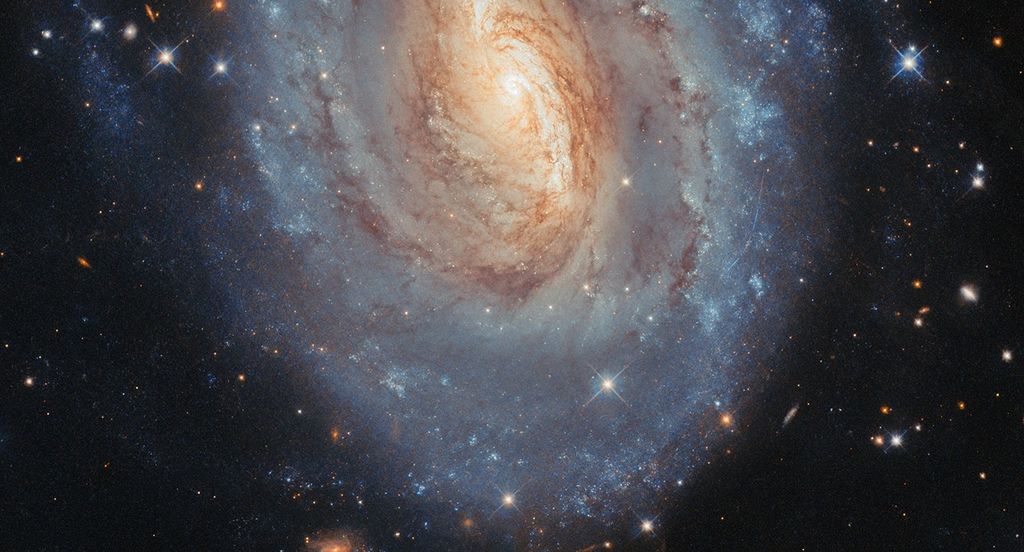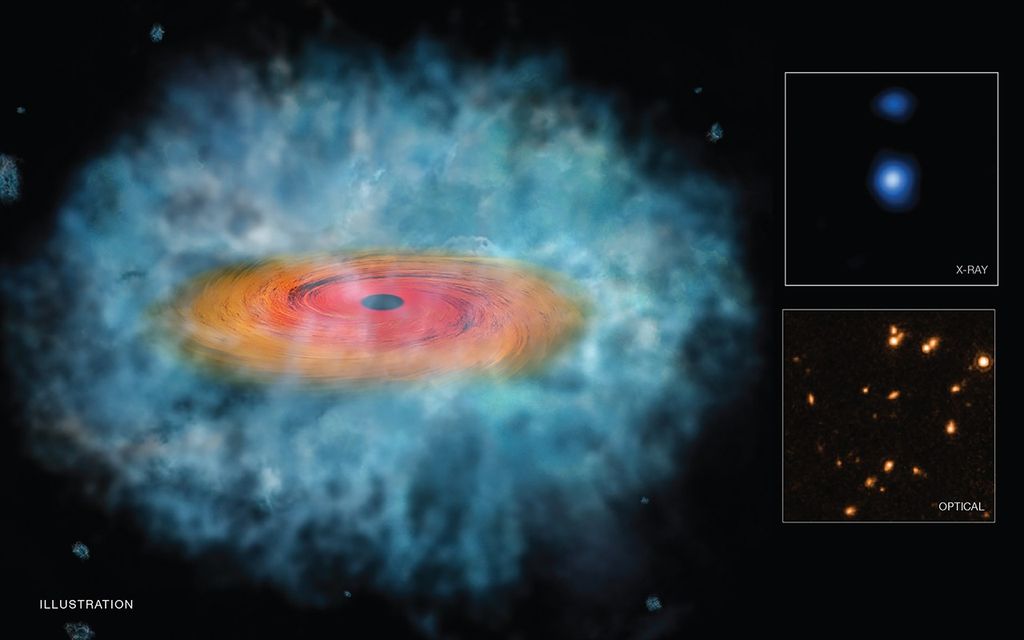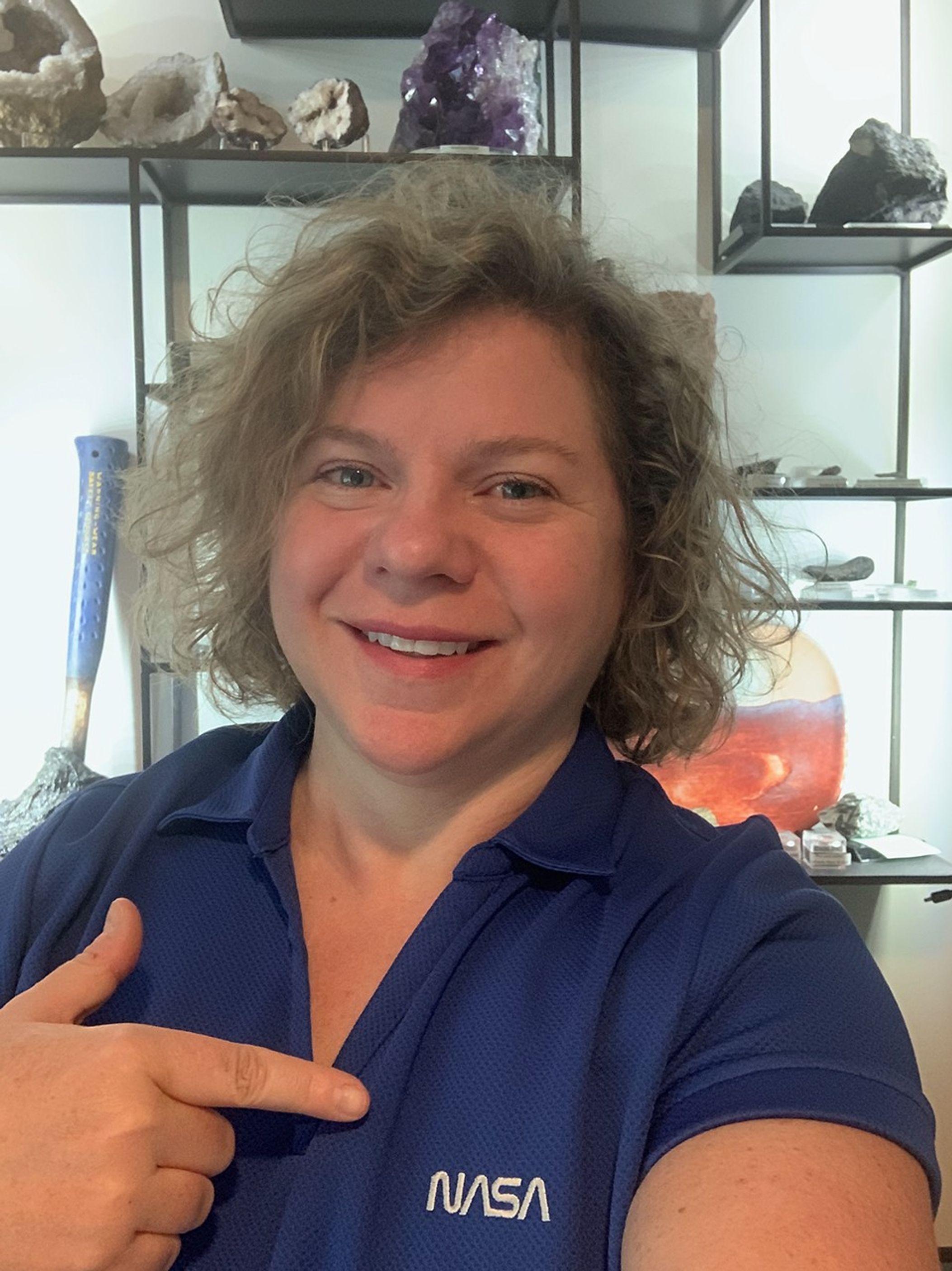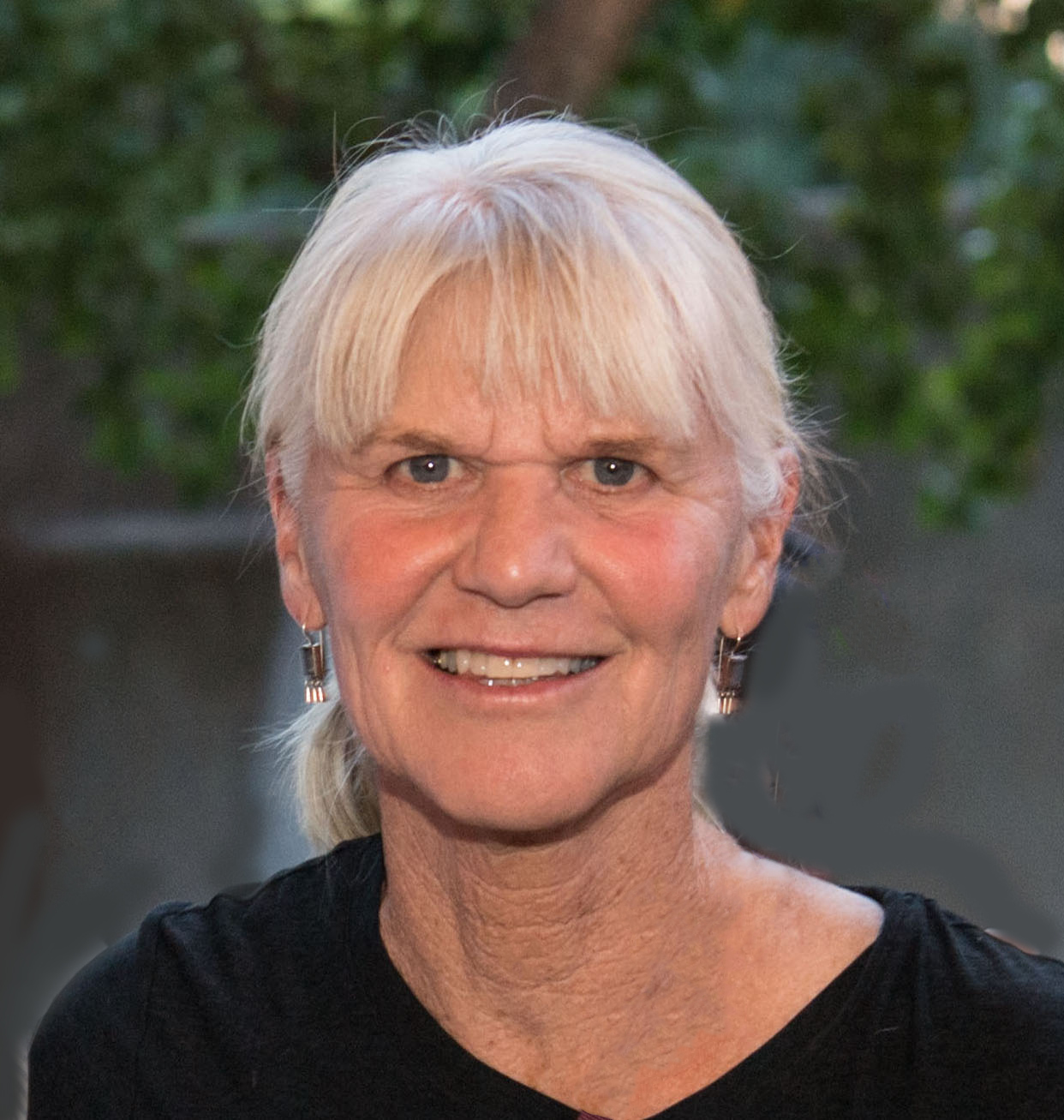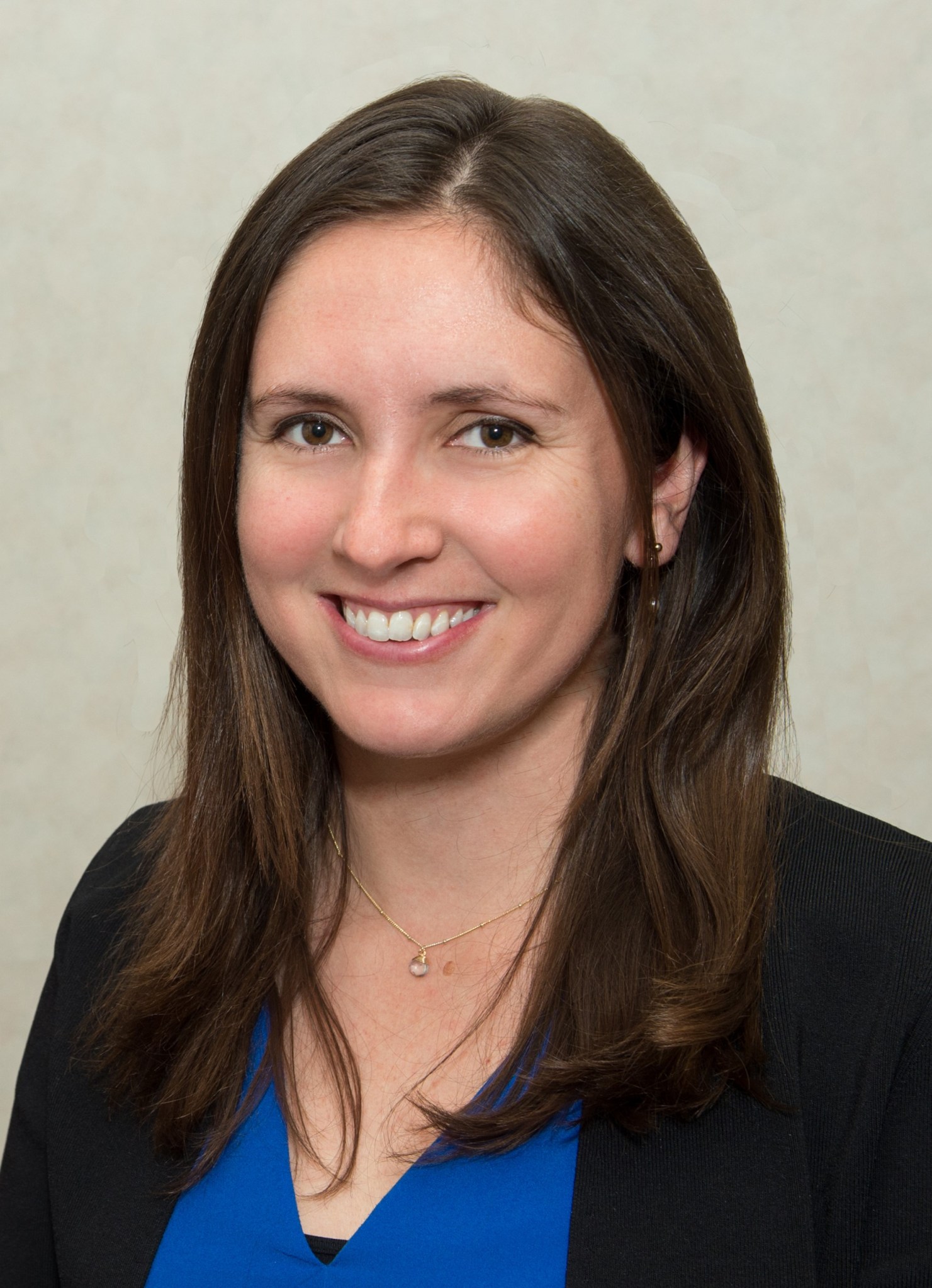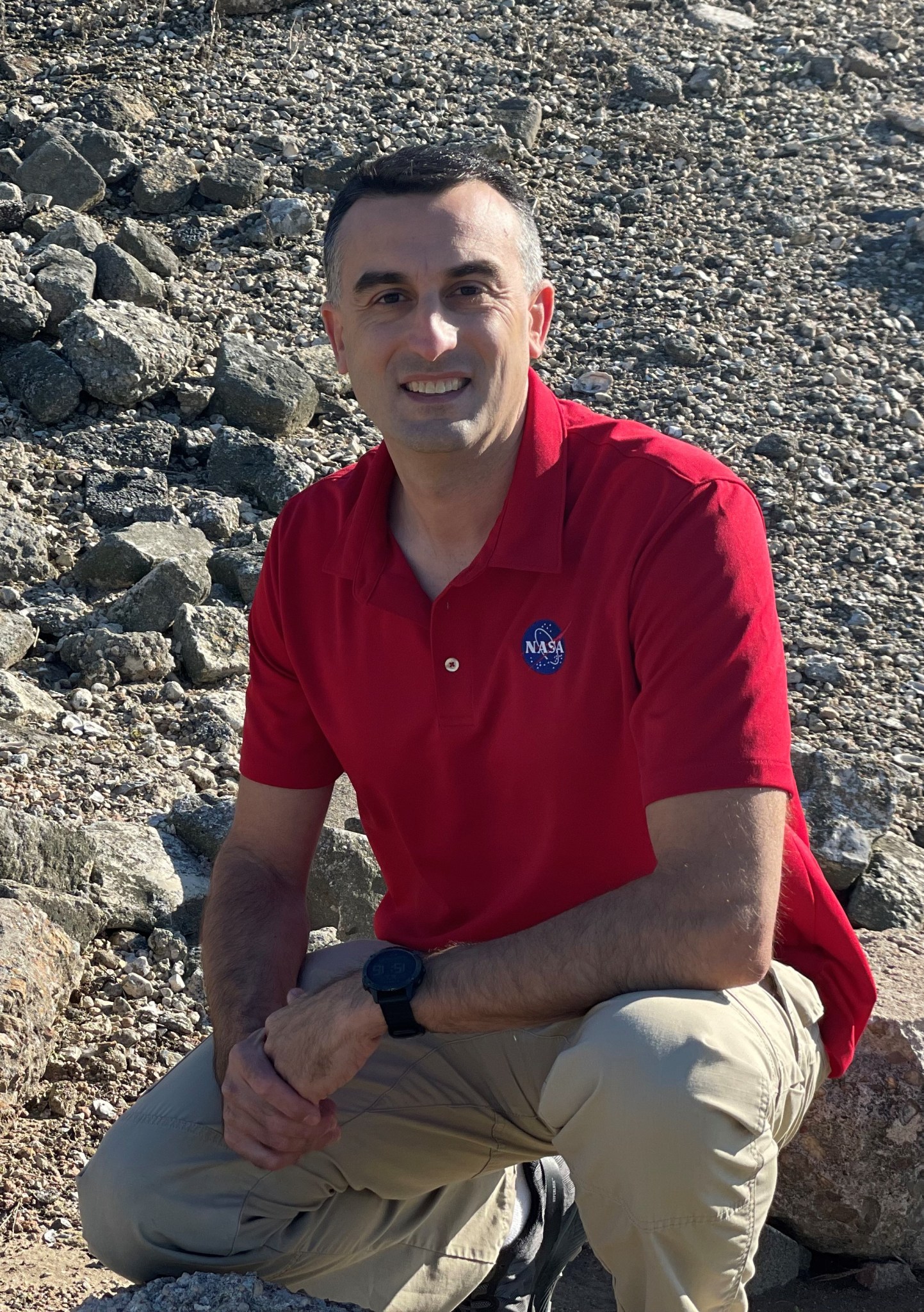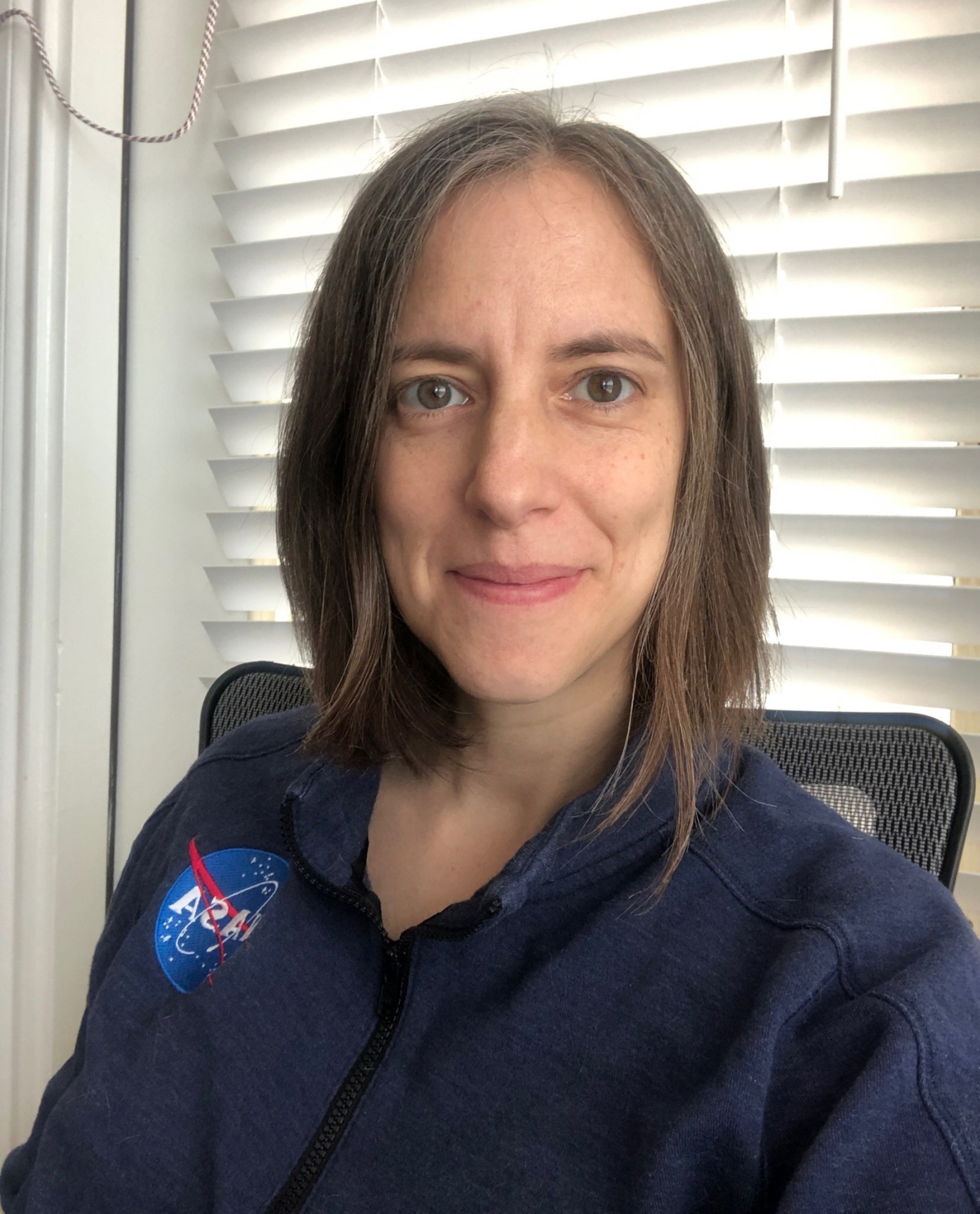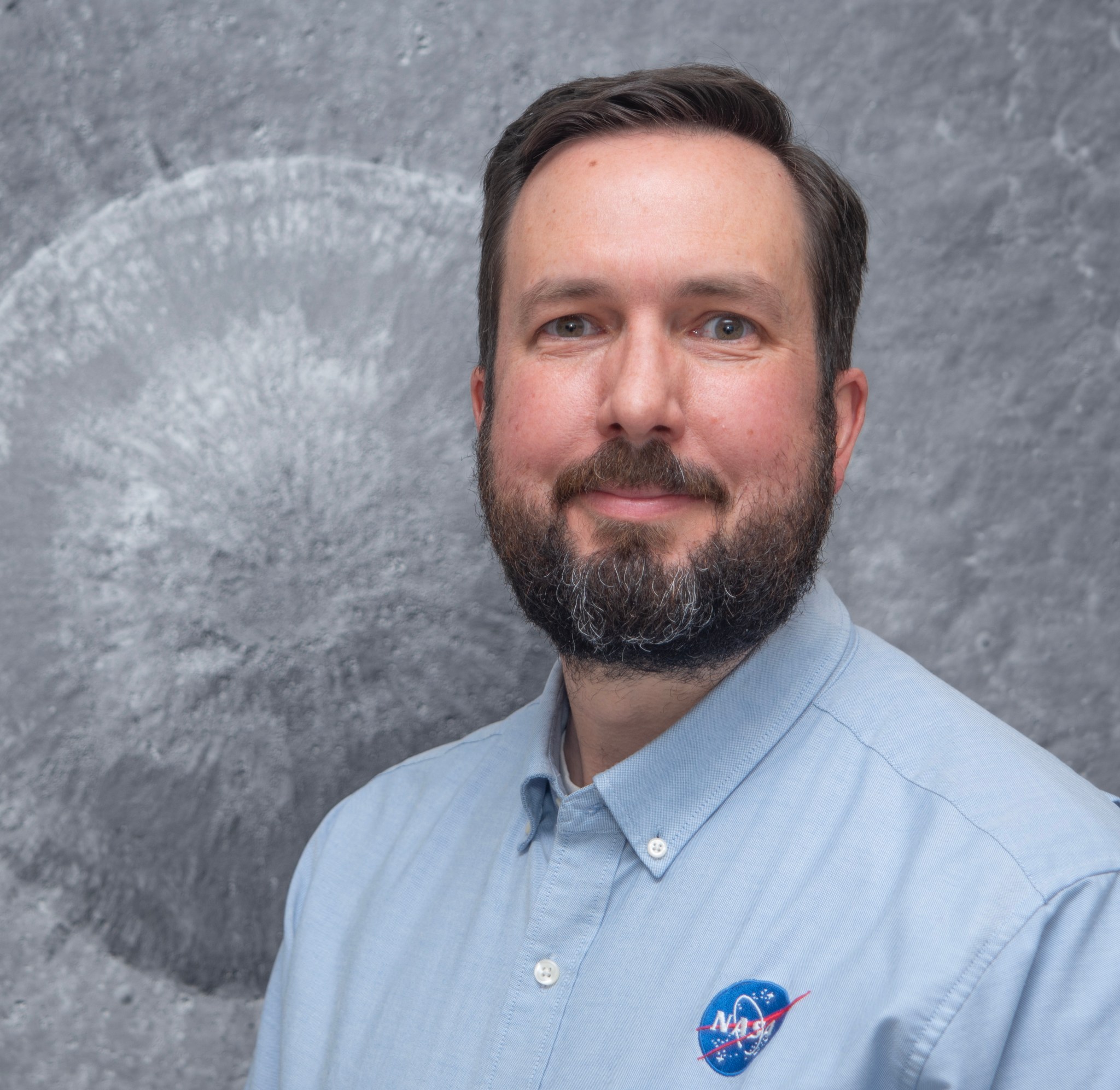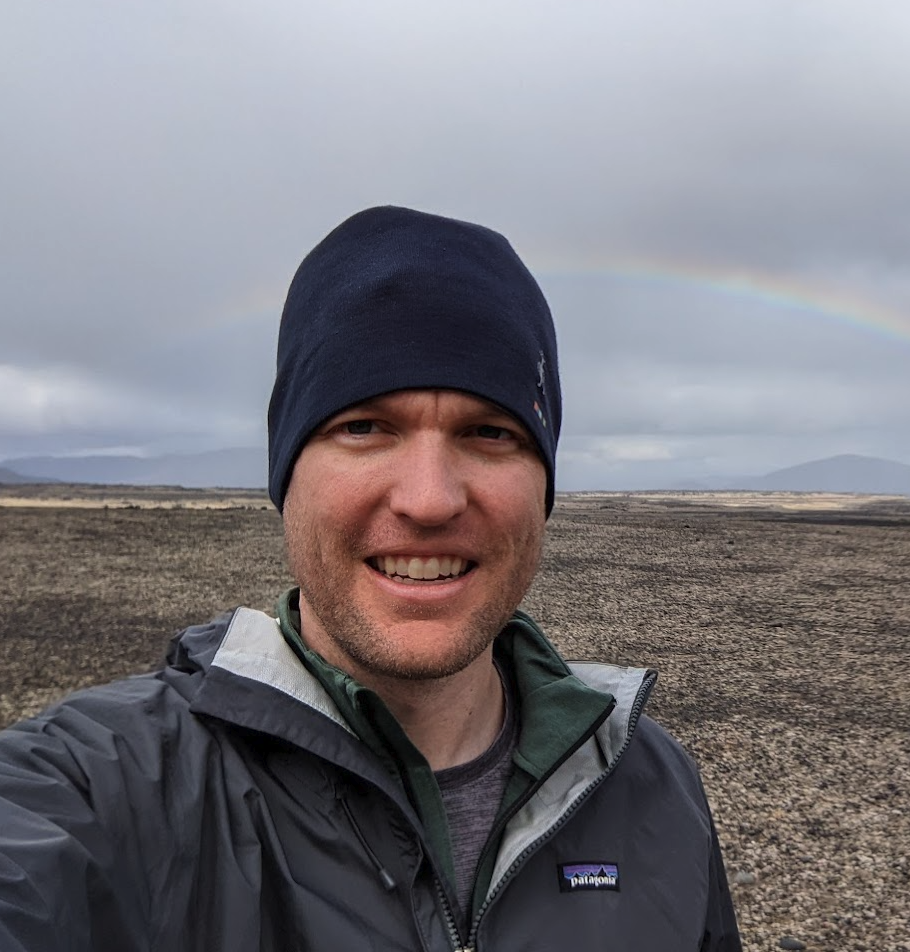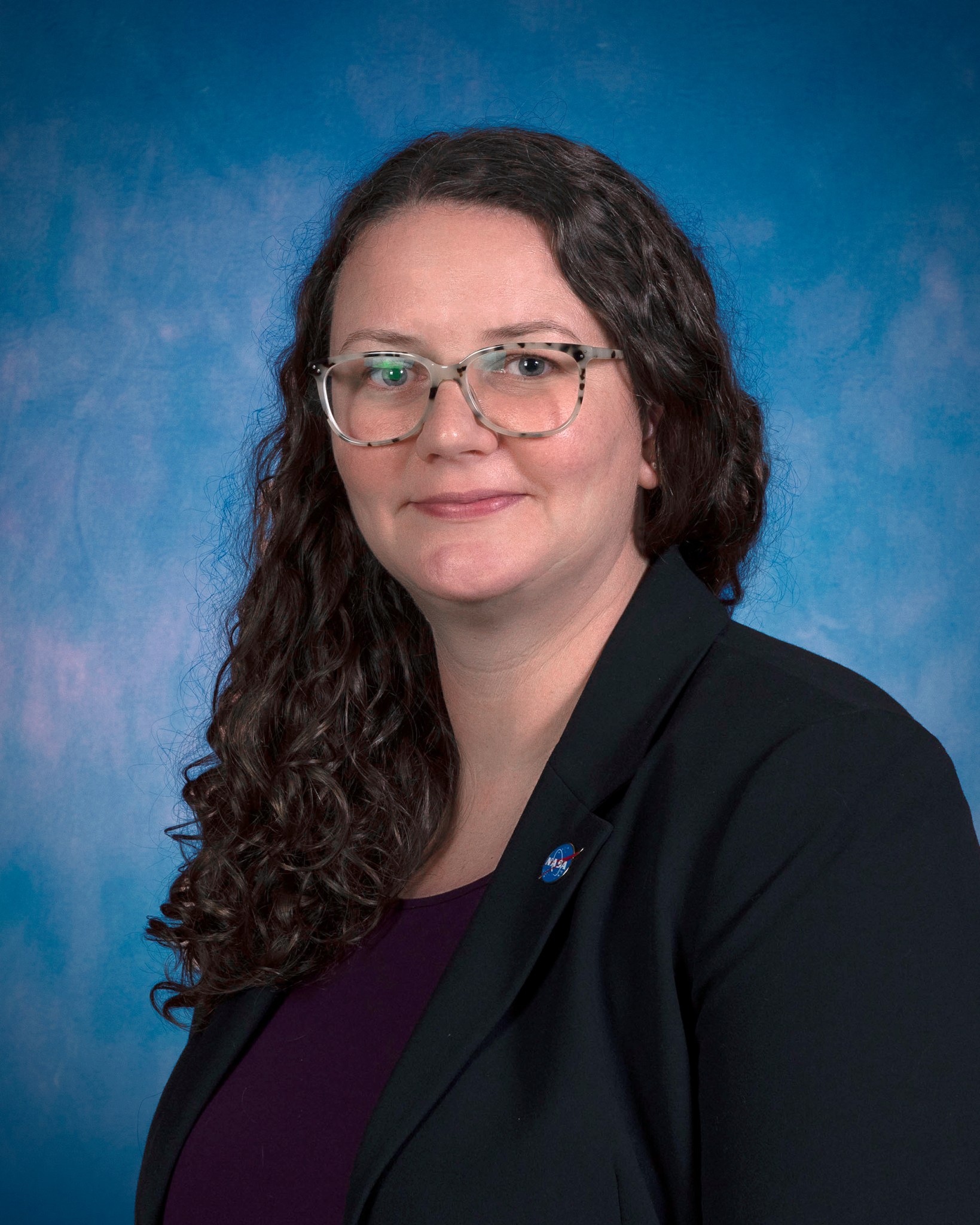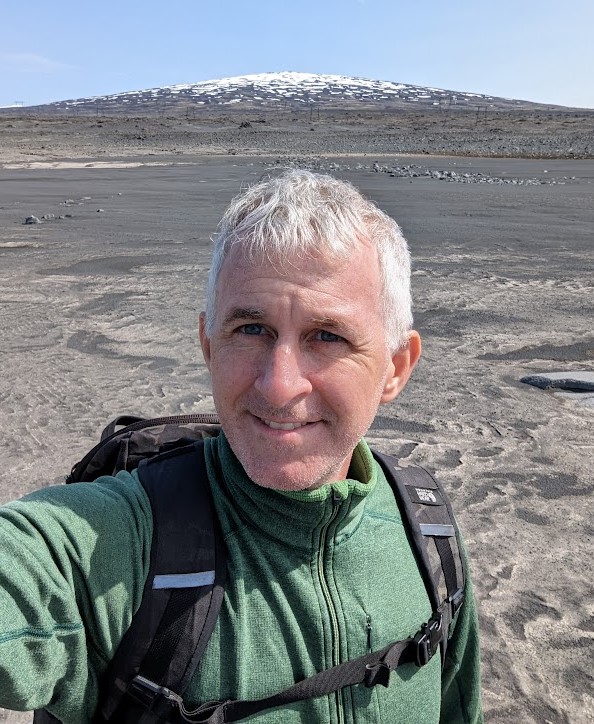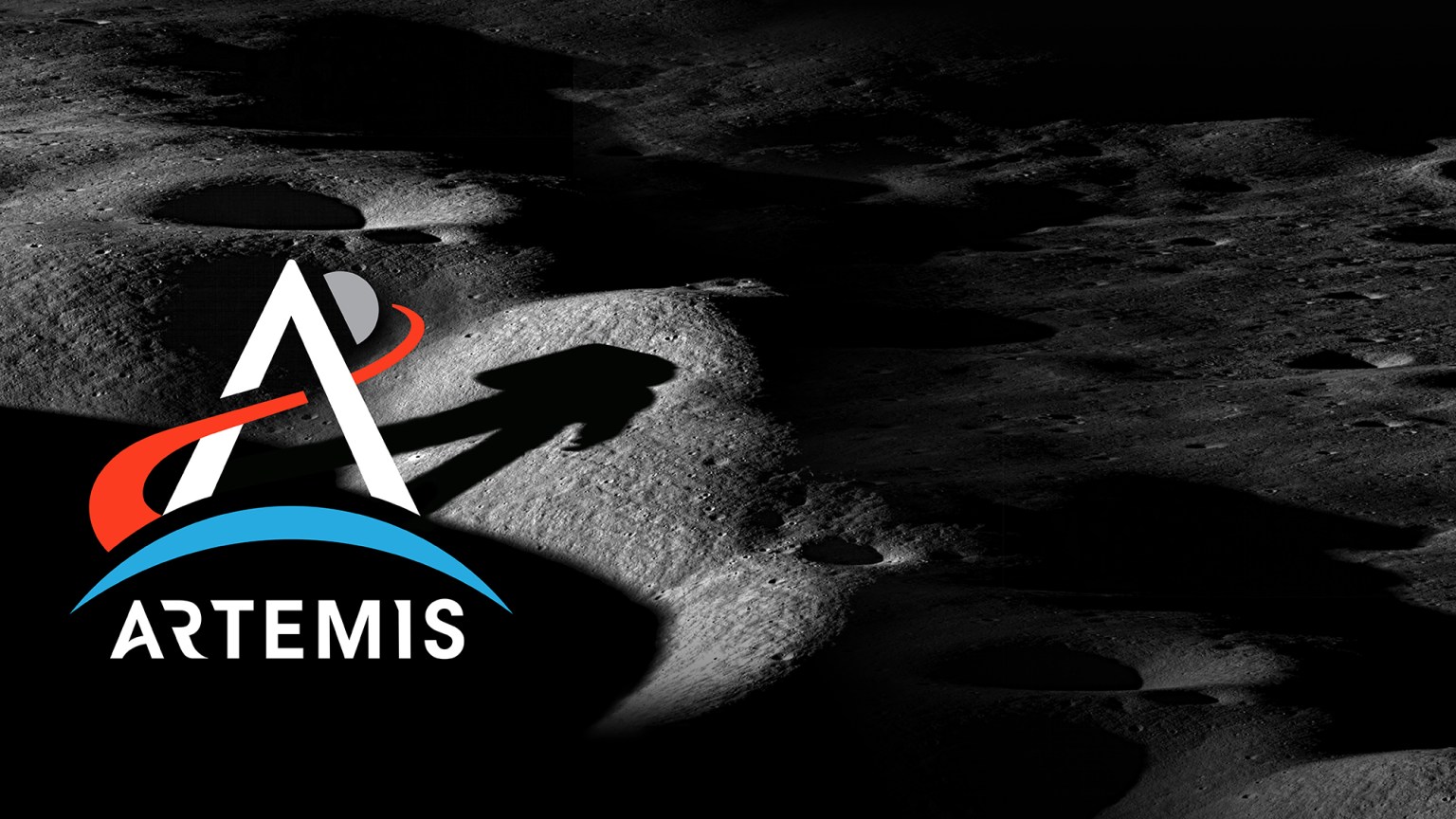
Artemis Internal Science Team
The Artemis Internal Science Team (AIST) is composed of leaders in lunar science from across NASA who ensure the Artemis architecture supports science that the community wants to accomplish. It handles science-relevant requests and queries from across NASA. Members are embedded on boards and working groups across Artemis, review documents, develop goals and requirements, interface with Artemis competed geology and instrument teams, and lead trainings for crew and competed teams. AIST supports Artemis mission and post-mission operations and analyses as well as program-level strategic planning across the entire Artemis campaign, which provides Mission-to-Mission continuity to maximize our science return.
AIST TEAM
Cindy Evans
Training and Strategic Integration Lead
Johnson Space Center (JSC)
The Training and Strategic Integration Lead (TSIL) leads the integrated geology training for Artemis lunar surface missions (including astronaut crew and engineering/flight operations training), communicates crew training requirements and schedule, and is the prime interface for geology training between the flight operations community, the science training team and the competed Artemis Geology team. This position coordinates closely with Science Flight Operations and Hardware Testing Leads.
In addition, the TSIL is responsible for managing and integrating the work of the multi-center Artemis science integration team that supports human exploration activities (ESDMD-funded work supporting science operational planning, testing and analyses of hardware and operational concepts, operations product development) with the Artemis Science Team efforts.
Kelsey Young
Science Flight Operations Lead
Goddard Space Flight Center (GSC)
The Science Flight Operations (SFOL) serves as the lead science representative to the Mission Control Center (MCC) and Extravehicular Activities (EVA) Flight Control Teams, both pre-mission and during real-time operations, to enable successful scientific operations. The SFOL leads the integration of the AIST into the broader Artemis flight control structure as well as supports real-time mission operations. Responsibilities of this position include coordinating the overall architecture and communications of the science and payload teams within the larger MCC flight control framework as well as coordinating Science Team onboarding and training and the physical workspace and required resources for Science Team operations. The SFOL is responsible for managing the Science Evaluation Room (SER) training flow, certifying SER team members, and identifying Science Officers to enter the FOD training flow. They are also responsible for managing the generation of all science operations pre-mission products (traverse planning inputs, etc.). The SFOL integrates closely with the Training and Strategic Integration Lead and FOD counterparts on the development and implementation of an integrated science and operational training program for Flight Control Teams and Artemis crew members. Additionally, the SFOL serves as the Science Team Integration Lead and Science Operations Representative for Artemis mission simulations.
Trevor Graff
Extravehicular Activities (EVA) Hardware and Testing Integration Lead
Johnson Space Center (JSC)
The Extravehicular Activities (EVA) Hardware and Testing Integration Lead is the lead science interface for EVA hardware and testing to enable scientific operations on the lunar surface. Science-relevant EVA hardware includes geology tools/equipment, sample containment, equipment transport, spacesuits, and more. This position interfaces with both internal and external hardware teams during all development and operational phases including requirements definition, design, analysis, prototyping, testing, procedure development, training, and real-time mission operations to ensure scientific goals, intent, and objectives are addressed. The EVA Hardware and Testing Integration Lead also facilitates the development, coordination, and management of integrated EVA testing events and the facilities in which they are conducted. This position serves as a prime science representative during EVA testing events at both onsite facility simulations and remote field analog environments. They aid in the coordination of hardware, operations, logistics, and environmental conditions (terrain, lighting, simulants, etc.) for successful EVA testing and science integration. This position coordinates closely with the Science Flight Operations Lead and Training and Strategic Integration Lead as a science representative to the FOD Surface Operations Team and supports crew and MCC training and real-time operations.
Barbara Cohen
Sample Integrity Lead
Goddard Space Flight Center (GSFC)
The Sample Integrity Lead (SIL) develops Artemis program-level and mission-specific sample integrity strategies and ensures their implementation. They define requirements for lunar rock, regolith, and volatile sample return strategies to meet community-defined objectives. They help each science team define a sampling plan that fits utilization constraints, work with the Flight Operations team to mature sample collection concepts of operation and ensure appropriate execution of sample collection during missions. The SIL leads planning for the scientifically sound return of samples, interfacing with all groups that handle the samples to develop requirements for physical effects (shaking, shock, magnetic, thermal, etc.), stowage and recovery, planetary protection, and mission safety and assurance. The SIL supports the Contamination Control Scientist on contamination issues and knowledge and provides program-level support to the Curation Lead during preliminary examination.
Andrew Needham
Contamination Control Scientist
Goddard Space Flight Center (GSFC)
The Contamination Control (CC) Scientist defines and develops Artemis sample contamination recommendations that flow to engineering requirements and implementation, as well as creating a contamination budget geared both toward the specific science questions identified by the Science Team and to the larger sample analysis community. They develop a robust Contamination Knowledge (CK) program to archive and characterize sample-intimate materials and environments such as tools, containers, and processes. The CC Scientist works closely with other members of cross-mission and mission-specific science teams on a wide range of activities related to the collection and transport of samples from the lunar surface to curation facilities on Earth.
Juliane Gross
Curation Lead
Johnson Space Center (JSC)
The Curation Lead (CL) is the primary interface between the Astromaterials Curation Office, the Artemis Science Team, and other stakeholders. The CL is responsible for representing curation during the planning and execution stages of all Artemis missions that plan to return lunar samples until the point of sample custody transfer to NASA Johnson Space Center for each Artemis mission. The CL develops the pre-mission portions of an Artemis collection plan, including the curation strategy plan for the campaign, and curation plans for each individual Artemis mission. In addition, the CL participates and assists in any Artemis Team discussions that pertain to lunar samples, including planning for and execution of sample collection, sample handling, sample transport, and sample storage at all stages of the missions. Their participation in sample-related discussions is crucial to guaranteeing curation input is considered prior to and during Artemis sample return missions, which will help to maximize the scientific return of the samples and ensure the needs of future generations of researchers are considered. As such, the CL assists each Artemis geology team define a sampling plan that fits utilization constraints, assists the Flight Operations team to mature sample collection concepts of operation, and helps to ensure appropriate execution of sample collection during missions. After sample return, the CL will co-lead and conduct PE in collaboration with the Artemis Collection Curator. The CL works with the Collection Curator to keep them informed about all activities that impact the long-term storage and health of the sample collection (e.g., planning for facility updates, new gloveboxes, etc.).
Samuel Lawrence
Mission Planning and Science Implementation Lead
Johnson Space Center (JSC)
The Mission Planning and Science Implementation Lead (MPSIL) coordinates the integrated science campaign development efforts for Artemis surface missions. This includes candidate surface science objectives assessment, geospatial data analysis for landing site selection and hazard assessments, hardware use-case development, and crew landing/training simulations, traceability and facilitation of surface asset planning, and pre-mission interface to ensure flight hardware is compatible with science and utilization activities. . The MPSIL serves as the technical lead for the Artemis Geospatial Data Team, coordinating the production of geospatial data products to inform Artemis programmatic decisions. The MPSIL is the point of contact for various surface planning teams that need geospatial data to formulate surface hardware and works with the Spatial Planning and Data Lead and the Science Flight Operations Lead to ensure compatibility of such plans with operational execution.
Noah Petro
Spatial Planning and Data Lead
Goddard Space Flight Center (GSFC)
The Spatial Planning and Data Lead (SPDL) coordinates with the Mission Planning and Science Implementation Lead (MPSIL) on data product generation and distribution of said data to Artemis Mission planners, including the Artemis Geology and deployed instrument teams. The primary responsibility of the SPDL is to provide data uniformity to all those relying on lunar data, ensure consistent and appropriate use of data to all mission teams, and clearly communicate with data users on the appropriate use of such data products. The SPDL works with data providers (Artemis Geospatial Team, Artemis Science Teams, etc) to develop required products for use by the planning teams, and updates those products as needed. The SPDL also provides detail to mission planners on variations in surface and geotechnical properties for surface activity planning purposes. Working with the Lunar Reconnaissance Orbiter (LRO) mission, Mission Planning and Science Implementation Lead, Data and Software Systems Lead, and NASA’s Geospatial Team, the SPDL works to develop products (including visualizations) to support mission and operations planning, traverse definition, and track surface activities and assets during surface operations.
Matthew Miller
Data and Software Systems Lead
Johnson Space Center (JSC)
The Data and Software Systems Lead (DSSL) is the lead science interface for aligning data expectations and availability in conjunction with developing, testing, and deploying operations work-support software systems to enable scientific exploration of the lunar surface. These data and software capabilities support flight controllers and science team decision-making throughout all phases of mission planning, training, execution, and post-mission analysis. These systems also include astronaut decision-making systems via advanced spacesuit, instrument, and vehicle display and control solutions that enable scientific operations. This role interfaces with the broader Artemis mission systems and engineering teams during all phases of system development and operational phases including requirements definition, design, analysis, prototyping, testing, training, and real-time mission operations to ensure scientific goals, intent, and objectives are addressed. The DSSL also facilitates the development, coordination, and management of testing events to ensure software systems are iteratively designed, built, and tested in concert with the EVA and Science flight teams. The DSSL coordinates closely with the Spatial Planning and Data Lead to ensure all relevant science data are incorporated, the Science Flight Operations Lead to ensure system capabilities align with the work needs of operations team, and the Hardware, Payloads, Sample and Curation Leads to ensure integration of all necessary data throughout Artemis operations.
Renee Weber
Payload Lead
Marshall Space Flight Center (MSFC)
The Payload Lead (PL) is the designated program interface for all SMD Artemis payloads and provides continuity across programs (M2M, HLS, Orion, LTV, PR, EHP, PMPO) and missions to ensure payloads are optimized for overall mission science return. The PL helps author SMD solicitations for Artemis science payloads and provides input on selection recommendations, tracks the rapidly evolving requirement space, provides input to relevant program documentation, and facilitates M2M payload feasibility assessments. They act as a liaison between the programs and the science community and interacts with M2M and other critical stakeholders as required and engage as needed at the program level to ensure that science payload needs are understood and supported. The PL also interfaces with the Artemis Mission Project Scientists for mission-specific instrument prioritization, the Space Flight Operations Lead (SFOL) for real-time surface operational constraints, the Training and Strategic Integration Lead (TSIL) for payload training, the EVA Hardware and Testing Integration Lead for deployment operations planning and execution, the Mission Planning and Science Implementation Lead (MPSIL) and Spatial Planning and Data Lead (SPDL) for campaign development, and the Data and Software Systems Lead (DSSL) for payload data pipeline development from initial deployment through permanent archiving.
Ryan Ewing
Science Mobility Lead
Johnson Space Center (JSC)
The Science Mobility Lead (SML) serves as the lead science interface for crewed and uncrewed Artemis mobile surface asset development and operations. The SML enables lunar surface science and supports science team decision making by coordinating the communication of science knowledge and subject matter expertise to ensure mobile assets are capable of meeting science objectives. The primary responsibilities of the SML are to identify opportunities and challenges for science with the vehicular elements of the Artemis Lunar Terrain Vehicle (LTV), Pressurized Rover (PR), and other mobile assets, to coordinate communication of science and SMD priorities to the mobile asset projects to ensure science requirements and rationale are understood and implemented in a way that supports community objectives, and to communicate project activities to NASA HQ and AIST. The SML interfaces with NASA mobile asset project teams, working groups, and internal and competed mission science teams along with external teams working on mobility like LTV providers, Japanese Aerospace Exploration Agency (JAXA), and others. The SML supports the mobile element projects from the pre-mission through execution phases to communicate changes and update science capabilities of mobile assets to stakeholders.














